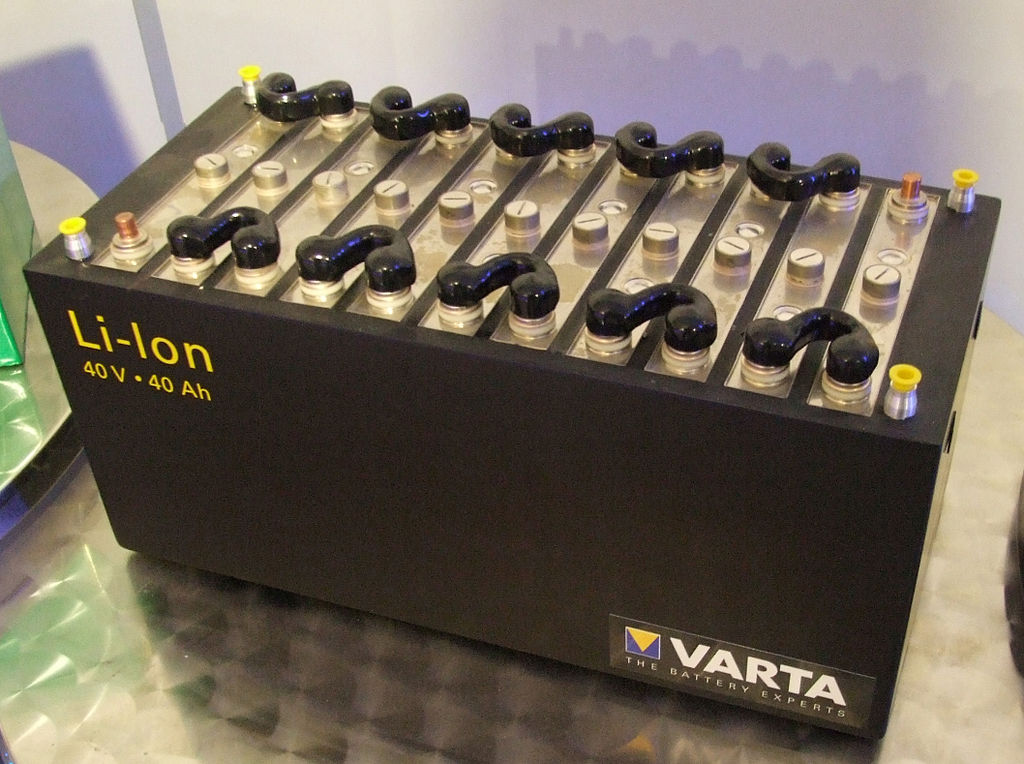A Belgian-Ethiopian research team has compared the levelized cost of energy (LCOE) and net present cost (NPC) of lithium-ion and lead-acid batteries for stationary energy storage and has found that the former are, techno-economically, more viable.
The analysis of both storage technologies was modeled through the HOMER software and the Equivalent Circuit Model (ECM), which describes the pure electrical behavior of a battery in terms of voltages, currents, and capacitances. “The ECM model is built-in using electrical components, which respond to the battery electrically,” the scientists explained. “On the other hand, HOMER is software used for the optimization of the components to be used in the grid-connected electrical power system.”
The analysis considered the charge and discharge rate influence on the performance of both kinds of batteries under typical application conditions assuming their use in a grid-connected photovoltaic system (PVGCS) with an inclination angle of 16 degrees and an azimuth angle of 0 degrees. “The system consisted of a 10 kWp photovoltaic array, a grid-connected converter of 5 kW capacity, 83 Ah lead-acid battery storage, and a li-ion battery of 167 Ah with a load having a 4-5 kVA rating,” the group explained, noting that in the simulation, the grid electricity price was estimated at €0.084/kWh.
Citing previous studies, the researchers said that, for stationary energy storage, lead-acid batteries have an average energy capital cost of €253.50/kWh and lithium-ion batteries, €1.555/kWh, and that their total average power cost is €333.50/kWh and €2,210/kWh, respectively. “Furthermore, the environmental impact of lead-acid is categorized as having a high impact, whereas li-ion has a medium/low environmental impact,” they also specified.
Through the simulation, the academics found that li-ion and lead-acid batteries have almost comparable charge and discharge properties but they also ascertained that the lithium-ion devices have the same discharge characteristics response as lead-acid batteries even with less capacity and a lower number of battery units, while also providing longer lifetime characteristics. Moreover, they found that the micro-grid formed by the PV system and the lithium-ion batteries has a net present cost of €14,399, while that of the PV system with lead-acid batteries is around €15,106. As for the LCOE, the latter reached a value of €0.34/kWh and the former, €0.32/kWh.
“The reduced number of batteries affects the per-unit COE and therefore the COE of the micro-grid system with li-ion batteries is lower, as compared to lead-acid batteries,” they further explained, adding that li-ion batteries have lower lifetime costs when associated with PV and reduced losses if compared to lead-acid batteries. “From the investigations, it can be concluded that, the PVGCS system with li-ion batteries requires 40% lesser batteries as compared to lead-acid batteries, and supporting in provision of reliable power supply with lower cost.”
The comparison between the two storage technologies can be found in the paper Techno-economic analysis of lithium-ion and lead-acid batteries in stationary energy storage application, which was recently published in the Journal of Energy Storage. The research group comprises scientists from the Vrije Universiteit Brussels, in Belgium, and the Jimma Institute of Technology, in Ethiopia.
This content is protected by copyright and may not be reused. If you want to cooperate with us and would like to reuse some of our content, please contact: editors@pv-magazine.com.




If you start with bad numbers you get bad numbers. Present lead batteries, golf cart the best value, long life cost about $100/kwh, not $300/kwh.
And Li-ion costs $500-$1200/kwh retail in present homes, not $200/kwh.
Smart money buys lead now and in the 5-7 yrs before needs replacing, lithium will be under $200/kwh retail saving 40% overall plus an extra 5 yrs of storage.
This article makes little sense. In the beginning you write that Li is cheaper, but the numbers cited later seem to show the opposite. Also, when you cite cost per power, why do you write dollars per kWh?
I don’t understand how they can say that lead acid batteries are more harmful to the environment than Lithium when 99% of a lead acid battery is recyclable. Recycling Lithium batteries is only now being talked about with scant little recycling being done.
When Lithium batteries hit the $200/kWh price, I’ll certainly entertain the idea of switching over, but right now, the replace what I have in Lithium would cost me $40K. To replace my current lead-acid battery bank, around $5k.
The numbers just don’t make sense in this!
I think that need to be more clear about the full lifecycle for both. Recycle it’s harder on Li-ion than on lead. If good management is present on recycle leas battery process, no issues could be detected.
What is missing from the article is the # of charging cycles from lead-acid being much lower than li-ion. What is claimed elsewhere is that lead-acid is good for only 500 cycles versus thousands for li-ion. So that is where the arguing should commence.
“Lead-acid batteries, with a capital cost on par with lithium-ion, have an
annualized cost nearly three times higher due to their lower cycle life, DOD, and round-trip
efficiency.”